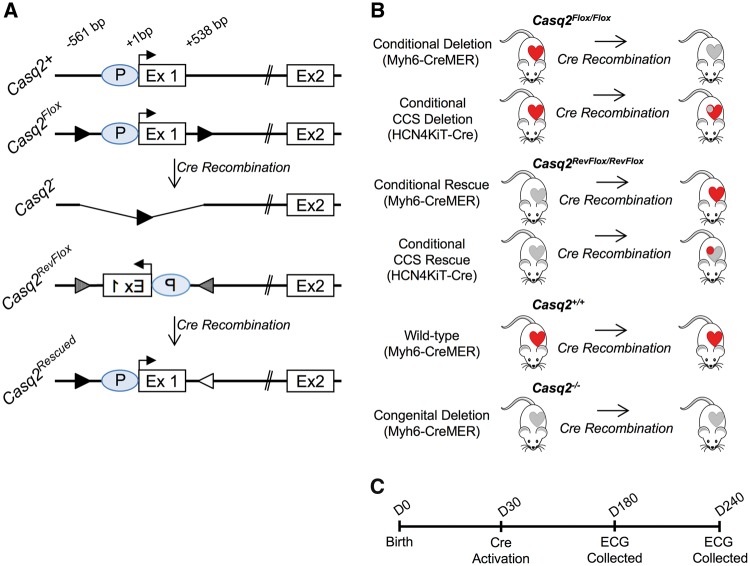Figure 1.
Novel Casq2 alleles and experimental plan. (A) Depictions of the 5′ ends of wild-type and mutant Casq2 alleles display the Casq2 promoter (P), transcriptional start site (horizontal arrow) and exons 1 and 2. Casq2Flox carries loxP insertions (black arrowheads) at −561 and +538 bp (relative to the transcriptional start). Casq2Flox is functionally wild type but Cre recombination generates the Casq2− allele, which is functionally null (5). Casq2RevFlox inverts the Casq2 promoter and exon 1 relative to rest of the gene and flanks this inverted region with loxP66 (arrowhead with vertical stripes) and loxP71 (arrowhead with horizontal stripes) sequences. Casq2RevFlox is functionally null but Cre recombination restores gene function. (B) Combination of Casq2Flox/Casq2Flox and Casq2RevFlox/Casq2RevFlox mice with the Myh6-MERCreMER transgene (Myh6-CreMER) or with the Hcn4KiT-Cre knock-in allele will generate mice that display tamoxifen-dependent loss of Casq2 or tamoxifen-dependent restoration of Casq2 in either the whole heart or specifically in the CCS. Control mice, both wild type (+/+) and congenital deletion (−/−), carry the Myh6-CreMER transgene and are treated with tamoxifen to control for side effects. In this diagram, CCS is indicated by the circle inside the heart. Red fill denotes functional Casq2 while gray fill denotes non-functional Casq2. (C) Timeline describing the experimental procedures used for each mouse.

